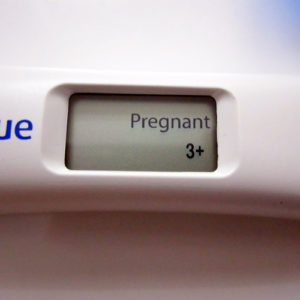Managing Labour Pain: Techniques and Medications
Giving birth is widely regarded as one of the most painful experiences a woman can go through. Labour pain arises from contractions of the uterine muscles and pressure on the cervix. This manifests as intense cramping in the abdomen, groin and back. Some women also feel pain in the thighs or sides.
Additionally, discomfort comes from the baby’s head pressing on the bladder and bowels. Stretching of the birth canal and vagina also contributes. Pain levels differ greatly between women and pregnancies.
Many find the continuous nature of contractions challenging, as intervals get shorter leaving little relaxation time. Knowing what to expect and having plans to manage pain can help women feel more in control. This article explores ways to alleviate labour discomfort.
Preparing Yourself
These techniques may help cope with labour pain:
- TENS (Transcutaneous Electrical Nerve Stimulation) – TENS machines use mild electric pulses through electrode pads on the skin to block pain signals. This prompts the body to release its own natural painkillers like endorphins. TENS is commonly used for various pains like arthritis, injuries and period cramps. It offers an alternative to medications during labour. A good choice for a well-priced and reliable TENS machine that you can use at home is the Kinetik Wellbeing Dual Channel TENS Machine from Zoom Health.
- Warm Showers – Sitting under a warm shower stream can relax the body and progress labour. Aim the handheld showerhead onto your back or abdomen. The warmth soothes discomfort.
- Massage – Targeted massage between contractions promotes relaxation. Communicate desired areas like the back, shoulders or feet. Start gently, as vigorous rubbing may cause panic. Massaging hands, temples and feet is calming.
- Position Changes – Switching positions opens the pelvis to aid baby descending. Upright positions and walking encourage progress. Try positions designed for early labour that conserve energy like sitting on a birth ball.
- Distractions – Activities like counting and mental exercises divert focus from pain. Listening to music also promotes relaxation.
- Hypnosis – Learning self-hypnosis to enter a focused, relaxed state helps manage pain perception. Hypnobirthing classes teach these techniques.
Pain Medications
If desired, various medicinal options provide effective relief:
- Analgesics – These drugs relieve pain but don’t completely numb sensation or movement. They are given intravenously or as injections. Analgesics impact the whole body and may cause drowsiness, nausea or other side effects.
- Regional Anesthesia – This blocks feeling in specific regions and is used for both vaginal and cesarean births. Types include:
- Epidurals – Anesthetic is injected via a thin catheter in the lower back. This numbs below the belly button including the vaginal walls. Dosage can be adjusted as needed. Epidurals lower blood pressure and can inhibit urination.
- Spinals – A one-time anesthesia dose is injected directly into the spinal fluid. This offers rapid short-term relief. Spinals can cause blood pressure drops and headaches.
- Combined Spinal-Epidurals – This combines both methods providing fastacting, adjustable pain relief. The epidural catheter allows topping up.
- Tranquilizers – These relaxants reduce anxiety but don’t impact pain. They may be used with other medications but can sedate both mother and baby. Tranquilizers can also cause memory impairment.
Pain Management Considerations
- Medications provide immense relief but may not eliminate pain fully. It’s important to have realistic expectations.
- Labour may be more painful than anticipated. Women open to medications may change their mind amid intense contractions.
- Certain drugs cross the placenta, potentially impacting babies. Discuss risks like drowsiness and heart rate changes with your provider.
- Adopting a flexible mindset allows changing plans amid unexpected pain levels. Options can be tailored to your needs.
- Non-medical techniques empower women feeling out of control. Simple measures like showers, massage and distractions offer comfort.
- Try a combination approach using methods like hypnosis, position changes and analgesics. Multimodal pain management is highly effective.
- Around-the-clock support from an experienced doula or midwife provides guidance in managing pain, navigating choices and advocating your wishes.
When to Get an Epidural
If considering an epidural, timing is key. Getting one too early may prolong labour and increase interventions like forceps. An extremely late epidural may not work as quickly. Ideal timing is when:
- Contractions become strong and regular approximately 3-4 minutes apart.
- Your cervix is at least 4 cm dilated.
- You are coping well with pain but reaching your limit.
An anesthesiologist is not always immediately available. So request the epidural when you feel ready, rather than waiting until exhausted and in agony. This allows time for screening and setup.
Positions to Ease Pain
Being upright and mobile aids labour progression and may reduce discomfort. Try these positions:
- Sitting on a birthing ball and rocking hips
- Slow dancing with your partner
- Lunging on all fours during contractions
- Standing and swaying hips from side to side
- Squatting or sitting on a low stool
- Kneeling and leaning over a raised surface
- Walking and lightly bouncing on a birth ball
Changing positions every 20-30 minutes prevents fatigue and muscle strain. Let your body guide you toward beneficial poses.
Creating a Calm Environment
Your birthing environment significantly impacts the labour experience. A relaxed atmosphere promotes comfort and focus:
- Dim Lights – Soft lighting avoids sensory overload. Darkness may cause anxiety.
- Comfort Measures – Have pillows, blankets, snacks, lip balm, lotion, and whatever makes you feel cared for.
- Familiar Items – Surround yourself with things like pictures, music and scents providing a sense of home.
- Privacy – Limit visitors to essential birth supporters who make you feel relaxed and empowered.
- Encouragement – Choose supporters who give reassurance, praise your efforts and help you feel confident.
When to Go to Hospital
Timing hospital admission appropriately ensures you labour in a calm environment as long as possible. Guidelines recommend going when:
- Contractions are regular and intense every 3-5 minutes lasting 60+ seconds. This signals active labour.
- Your waters have broken. Labour typically progresses faster once membranes rupture.
- You pass your mucus plug. This signals your cervix is dilating and effacing.
Arriving too early risks more interventions and stalled labour if sent home. Yet leaving it too late limits pain relief options, so balance these factors. Trust your instincts!
Preparing a Birth Plan
Creating a birth plan outlines your wishes and empowers you to have a say in your labour choices. Include:
- Ideal birth location – home, birthing center, hospital
- Preferred pain control types
- Positions you find comfortable
- Environment – lighting, music, aromatherapy
- Who you want present – partner, family, doula
- Requests for immediate skin-to-skin and delayed newborn procedures
- Breastfeeding preferences like uninterrupted bonding time
- Any cultural, spiritual or personal requests
Discuss your plan with your care provider and update it as preferences change. Remain flexible, as labour often veers from what we envision. Most importantly, surround yourself with supportive voices to help navigate decisions amid the challenges of labour.
When to Call a Midwife
It’s crucial to know when to notify your midwife that labour has started. Call when:
- Contractions are coming every 5 minutes, last 60+ seconds and are strong enough that you cannot talk during them. This signals established labour.
- Your waters break, especially if the fluid appears green/brown indicating baby had a bowel movement.
- You have any vaginal bleeding.
- You do not feel baby move for several hours.
Trust your intuition. Even if it seems “too soon”, call your midwife for guidance, especially if this is your first baby. They can assess if it’s time to come in. Don’t hesitate reaching out with any concerns.
Pain Relief on the NHS
The NHS offers various pain management options during labour:
- Gas and air (Entonox) provides fast relief between contractions. Some women dislike the dry mouth side effect.
- TENS machines are available to rent. Pads are placed on your back and the electric pulses block pain signals.
- Injections of pethidine or diamorphine give partial pain relief. Potential side effects include nausea and drowsiness.
- Epidurals numb sensation during labour and caesarean sections. An anaesthetist administers medication into the lower back.
- Local anaesthetic injections numb specific vaginal areas if stitches are required after birth.
Discuss preferences at NHS antenatal appointments. While specific pain relief cannot be guaranteed, providers accommodate requests if possible. Private hospitals offer more choices.
When to Consider Alternative Birth Locations
Low-risk pregnancies may consider alternative birthing environments like:
- Home – Labouring in familiar, calm surroundings. Requires a supportive birth partner and midwife. Transfer to hospital may be necessary.
- Midwife-Led Units – Offer a “home-like” atmosphere with birthing pools, low medical intervention and one-on-one midwife care. An obstetric unit is nearby if needed.
- Birth Centers – Provide a middle-ground between home and hospital. They have medical facilities available but a relaxed, low-intervention approach.
Benefits include greater freedom of movement, comfortable positions, and a private setting. Consider risks like lack of epidural anesthesia or limited medical intervention. Discuss your options extensively with providers to determine if an alternative setting aligns with your labour priorities.
Speeding Up Early Labour
The early stage when contractions begin can progress slowly. If desired, here are some natural ways to potentially shorten this phase:
- Stay upright and mobile – walking, swaying, lunging
- Take a warm bath or shower
- Have sex – semen contains prostaglandins which ripen the cervix
- Use a breast pump – nipple stimulation releases oxytocin
- Eat light, easily digestible foods and drinks to keep energy up
- Stay hydrated by sipping water
- Use a birth ball
- Apply clary sage essential oil around the cervix
- Acupuncture and acupressure may intensify contractions
Slowly ramping up activity levels as labour establishes helps avoid exhaustion. But don’t overexert yourself in early labour. Rest during contractions to conserve energy.
Coping Techniques for Back Labour
Around 20% of women experience intense lower back pain during labour, known as back labour. This often results from baby’s position. Coping techniques include:
- Pelvic tilts on all fours during contractions to encourage baby into a more favorable position
- Counterpressure on the sacrum applied by a partner
- Tennis balls between your back and the wall during contractions
- Hot or cold compresses against the back
- Squatting, supported kneeling or leaning forward which opens the pelvis
- Getting into water, either a tub, pool or shower
- Massage concentrated on the lower back
- Sterile water injections – a form of local anesthesia injected into the lower back
- An epidural, combined spinal-epidural or spinal block if the pain becomes unmanageable
Changing positions frequently gives relief by shifting pressure. Communicate with your support team for appropriate back rubbing/pressure during surges.
Speeding Up Labour Stalled by Epidural
A potential side effect of epidurals is slowed labour progress. If this occurs, techniques to intensify contractions include:
- Switching positions frequently – upright positions like squatting/sitting encourage descent
- Walking with support if permitted
- Pelvic rocks or lunges during contractions
- Squatting using a partner or bar for balance
- Sitting backwards on a birthing ball
- Nipple stimulation to release natural oxytocin
- Acupressure on labour pressure points
- Aromatherapy using clary sage oil placed on a facecloth
- Stopping intravenous fluids to intensify contractions
Stay hydrated and keep your bladder empty. Communicate any concerns about labour stalling promptly so interventions can be adjusted. Keep an open mind about modifying pain relief plans if needed.
Final Tips!
- Labouring and birthing your baby is an incredible feat of human strength – be proud!
- The intense moments of labour don’t last forever.
- Keep your focus by staying in the present moment.
- Surrender to the process – your body and baby know just what to do.
- Breathe deeply and vocalize freely through surges.
- Draw on your fierce love for your baby – it is the ultimate pain relief.
You’ve got this mama! Welcome your little one with power, determination and joy.
Photo by Kelly Sikkema on Unsplash
Zoom Baby is a leading supplier of Pregnancy Tests and Ovulation Test Kits





